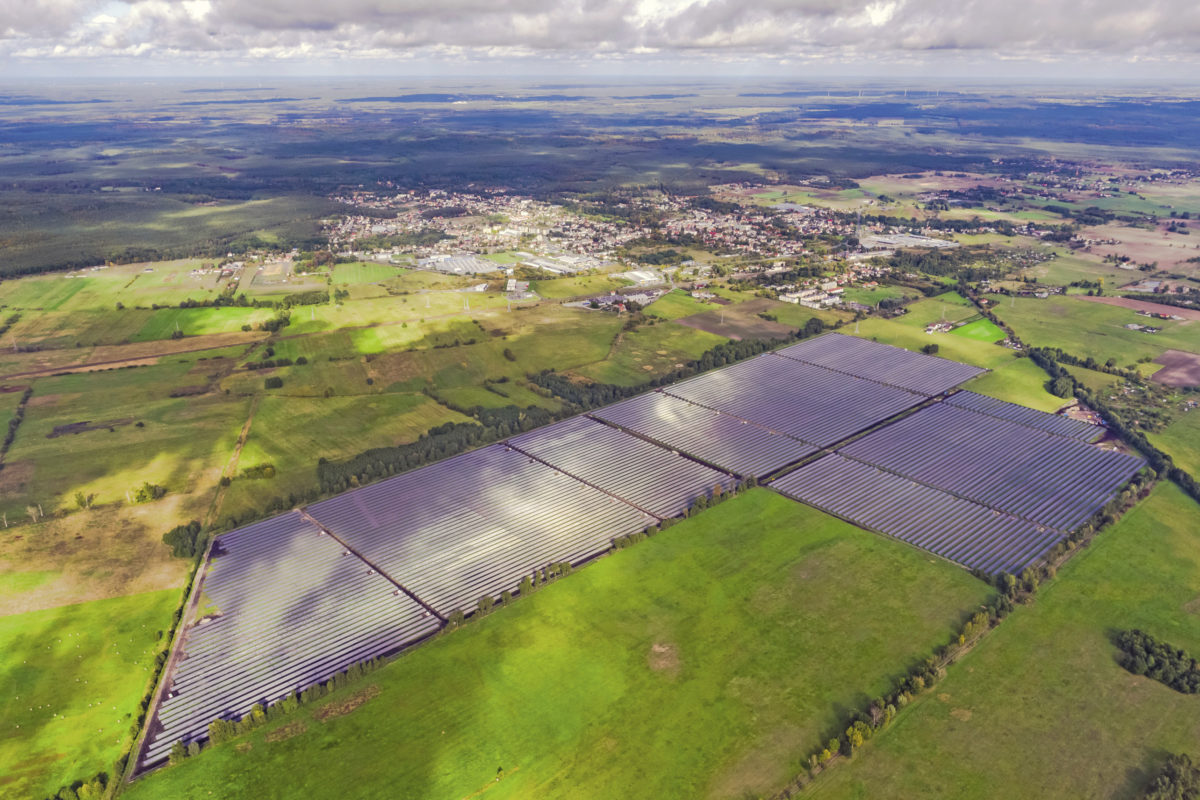Researchers from the Polish Academy of Sciences have developed a novel method for analyzing land eligibility and performing techno-economic assessments of utility-scale PV systems.
The new approach, which the researchers called SpatIo-temporaL scIentific ComputatiONs (Silicon), is based on a geographic information system (GIS), which helps analyze geographical cells at a spatial resolution of 100 m.
“To tackle the issue of country-specific cost elements, the model incorporates a levelized cost of electricity (LCOE) breakdown often used by governmental and intergovernmental organizations,” the research group clarified. “The proposed approach can be utilized to develop national and regional strategies focused on large-scale PV installations, facilitating the attainment of renewable energy goals.”
The method comprises two main modules: one intended to analyze land eligibility and another one focused on techno-economic assessment.
As for land eligibility, the method uses two kinds of datasets, either in raster or vector format. A raster dataset is a GIS dataset format that represents data as grids of cells or pixels and is ideal for continuous phenomena like elevation and temperature. A vector dataset, on the other hand, represents features as points, lines, or polygons with precise boundaries, making it suitable for marking data like roads and cities.
“In the case of vector datasets, geometries are either expanded through the application of a buffer or converted into a raster format,” the researchers said. “For raster datasets, map pixels representing the geographic extent of the country are assigned binary values. Subsequently, exclusions pertaining to the availability of land are applied to indicate buffer distances and land specifications.”
The model is trained to find an area that will fit a utility PV system, based on some exclusion criteria. For example, the method knows not to place a system within a 5 km distance from an airport, 120 m from power lines and 200 m from bird protection areas. It also excludes geographical areas with elevation above 2,000 m or slopes above 30 degrees.
The output of this first step is all the eligible land that a country might offer for large scale PV deployment. This output is then used as an input in the techno-economic assessments model, which yields results such as the levelized cost of energy (LCOE) in the same resolution of 100 m. To make that calculation applicable to different economic zones, the method asks to input information, such as local installation, hardware, and soft costs.
“The second component relies on established financial concepts, such as capital investment costs, operational and maintenance costs, and the levelized cost of electricity,” the academics further explained, noting that the costs can be transformed into formulas adaptable to various case studies.
To validate their model, the scientists applied it to Poland and found that around 3.61% of the country's available land may host utility-scale solar PV systems, corresponding to an area of about 11,277.70 km2. Depending on land use efficiency, that area can be used to host a PV capacity ranging from 394.64 GW to 563.77 GW. The results also indicate the LCOE could range from €0.043 ($0,045)/kWh to €0.049/kWh, with a national average of €0.045/kWh.
“Furthermore, it was found that most of the suitable sites for the deployment of utility-scale PV systems are concentrated in four regions located in the central and western parts of Poland (Ło´dzkie, Lubelskie, Podlaskie, and Mazowiecki),” the team added. “These regions account for more than 50% of the total capacity and electricity production potential. Additionally, Mazowiecki represents around 20% of the installable capacity potential.”
The new approach was introduced in the paper “A GIS-based method for assessing the economics of utility-scale photovoltaic systems,” which was recently published in Applied Energy.
This content is protected by copyright and may not be reused. If you want to cooperate with us and would like to reuse some of our content, please contact: editors@pv-magazine.com.



By submitting this form you agree to pv magazine using your data for the purposes of publishing your comment.
Your personal data will only be disclosed or otherwise transmitted to third parties for the purposes of spam filtering or if this is necessary for technical maintenance of the website. Any other transfer to third parties will not take place unless this is justified on the basis of applicable data protection regulations or if pv magazine is legally obliged to do so.
You may revoke this consent at any time with effect for the future, in which case your personal data will be deleted immediately. Otherwise, your data will be deleted if pv magazine has processed your request or the purpose of data storage is fulfilled.
Further information on data privacy can be found in our Data Protection Policy.